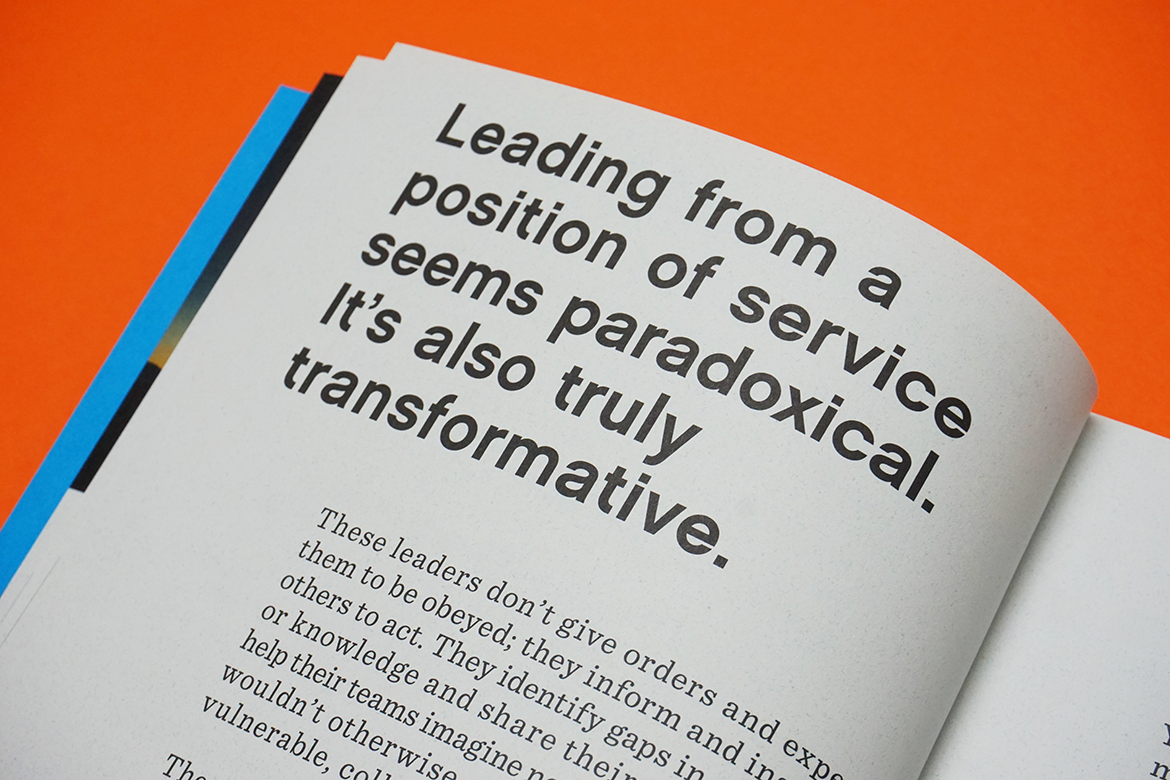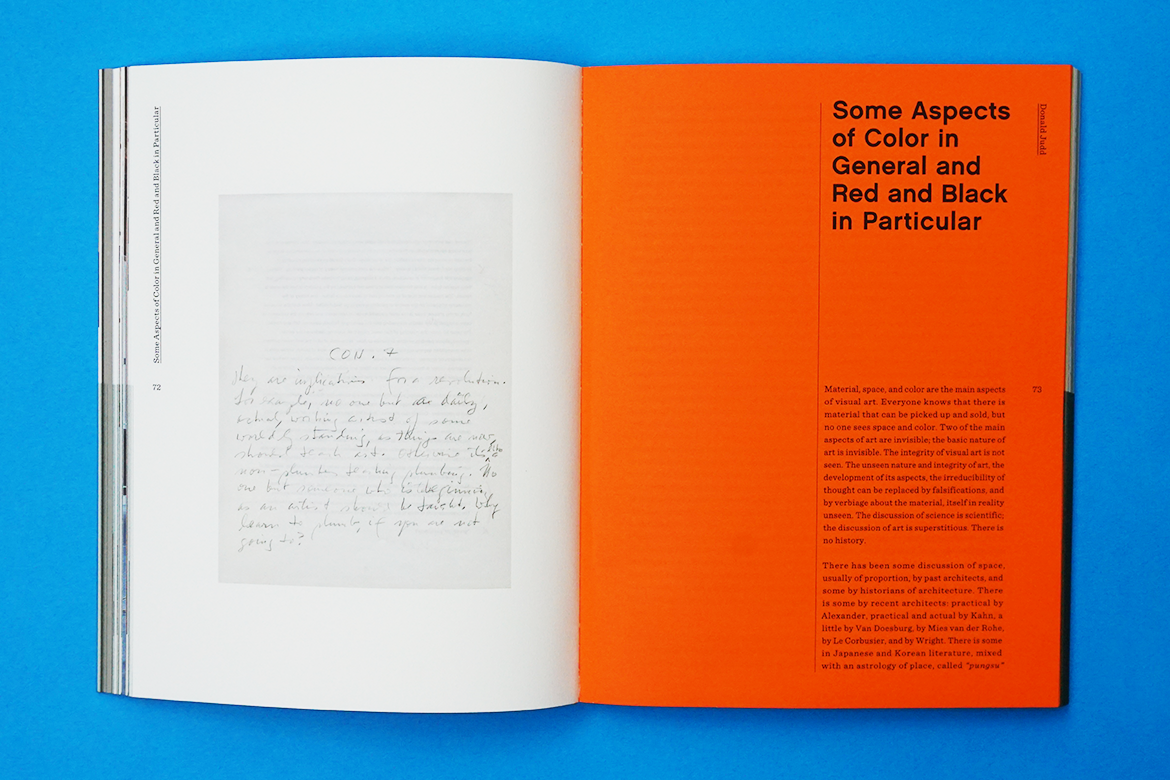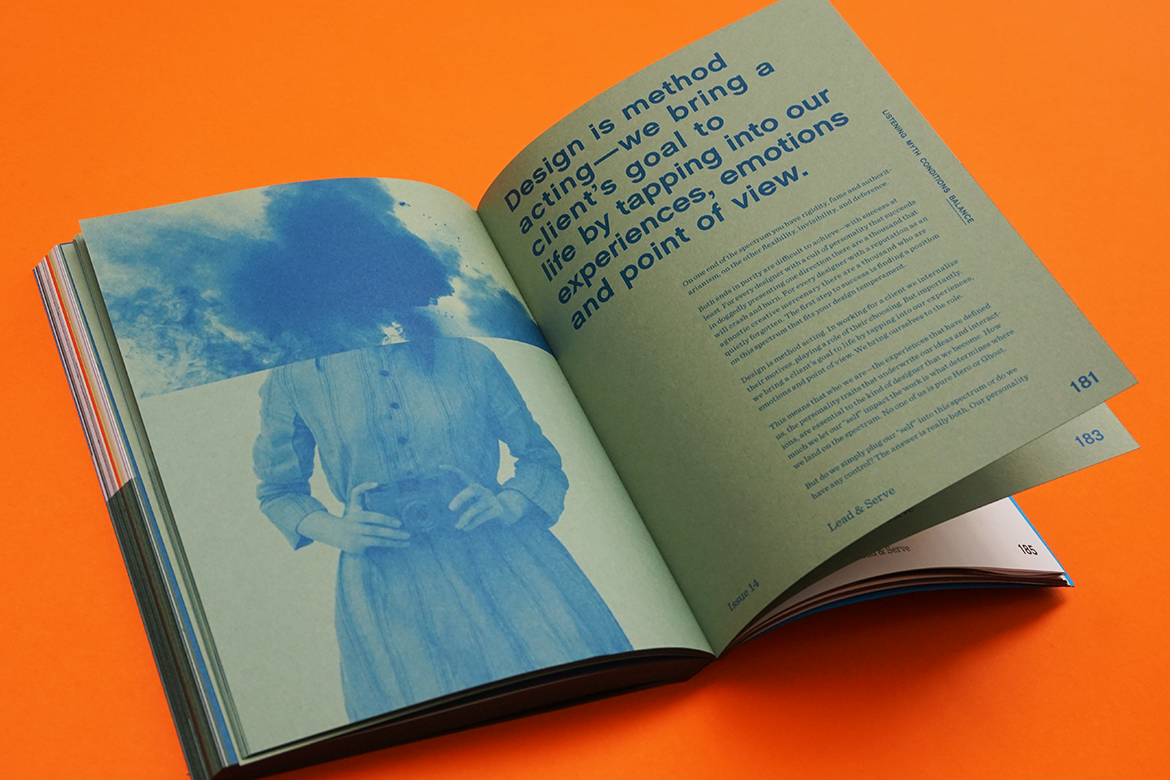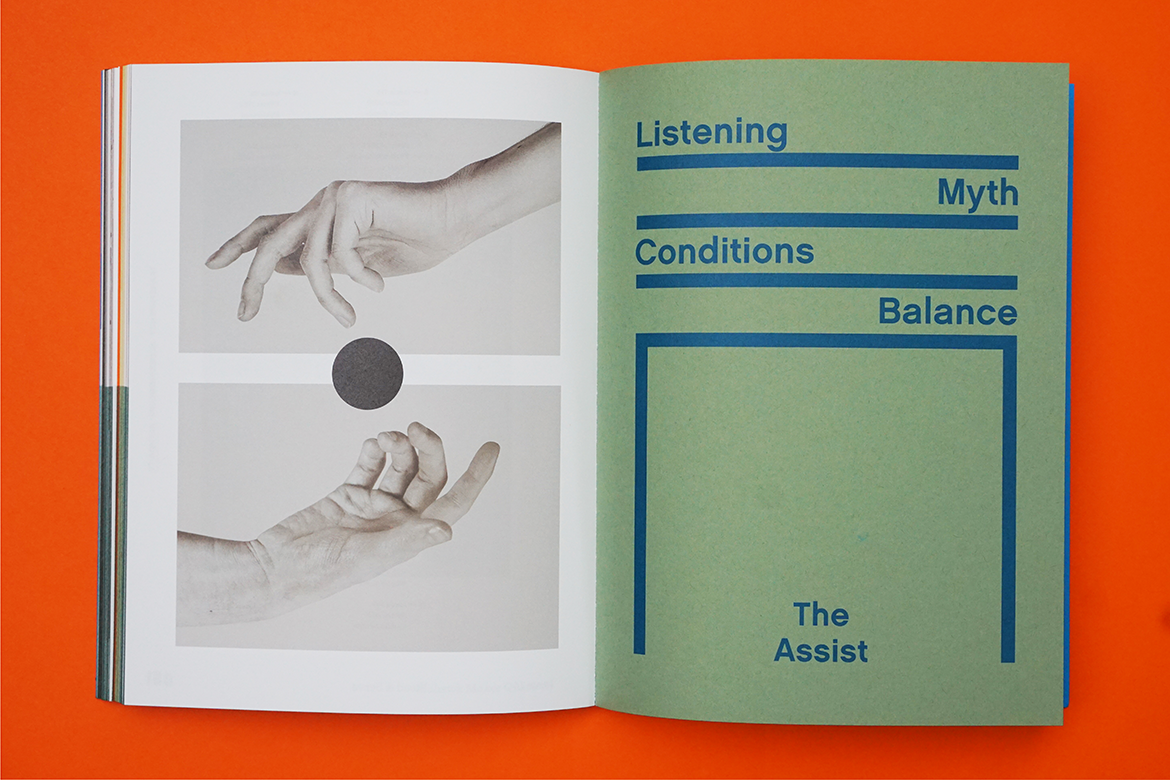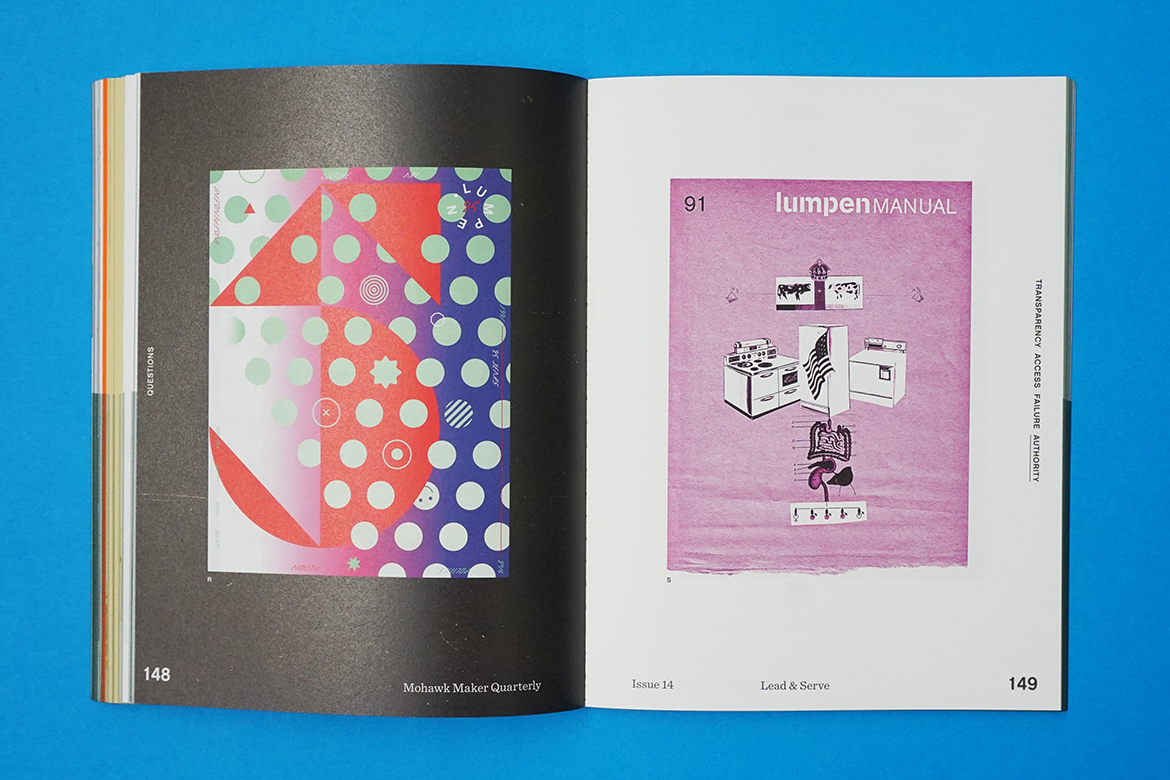Mohawk Maker Quarterly Issue #14: Lead & Serve
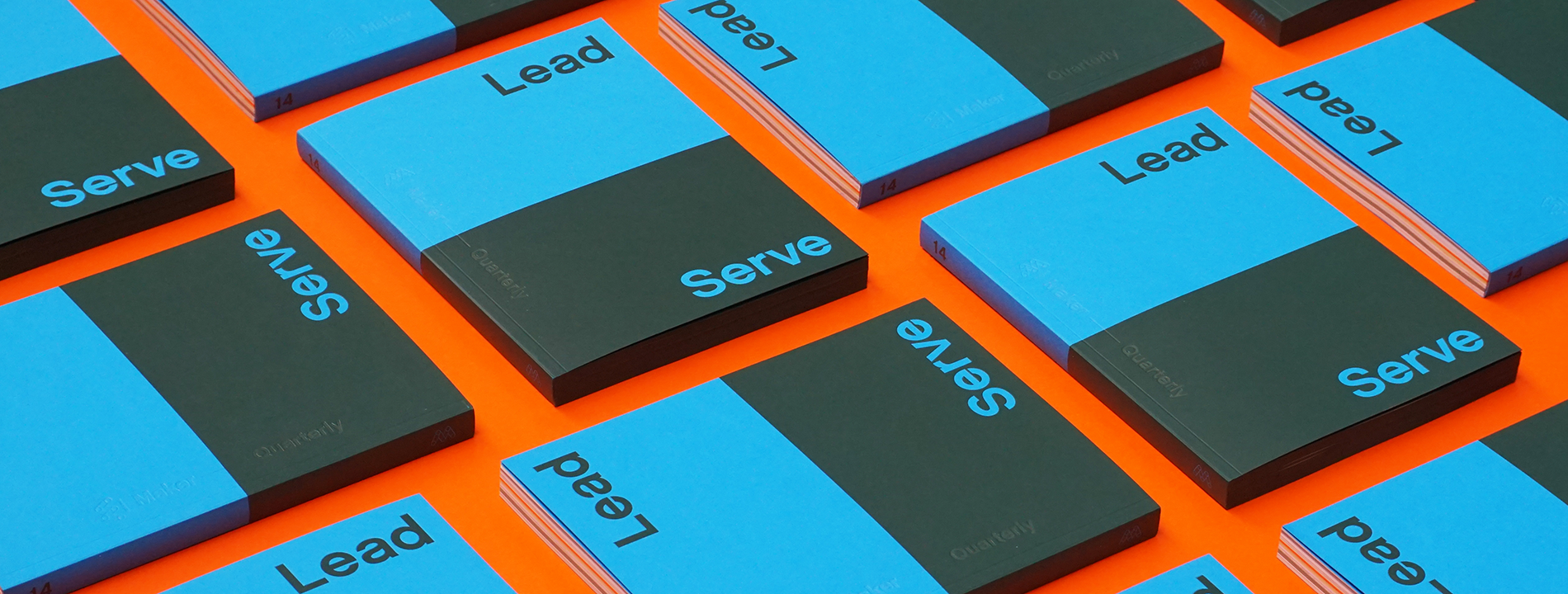
Issue No. 14 of the Mohawk Maker Quarterly is titled Lead & Serve and celebrates those who pave the way by helping others find their paths.
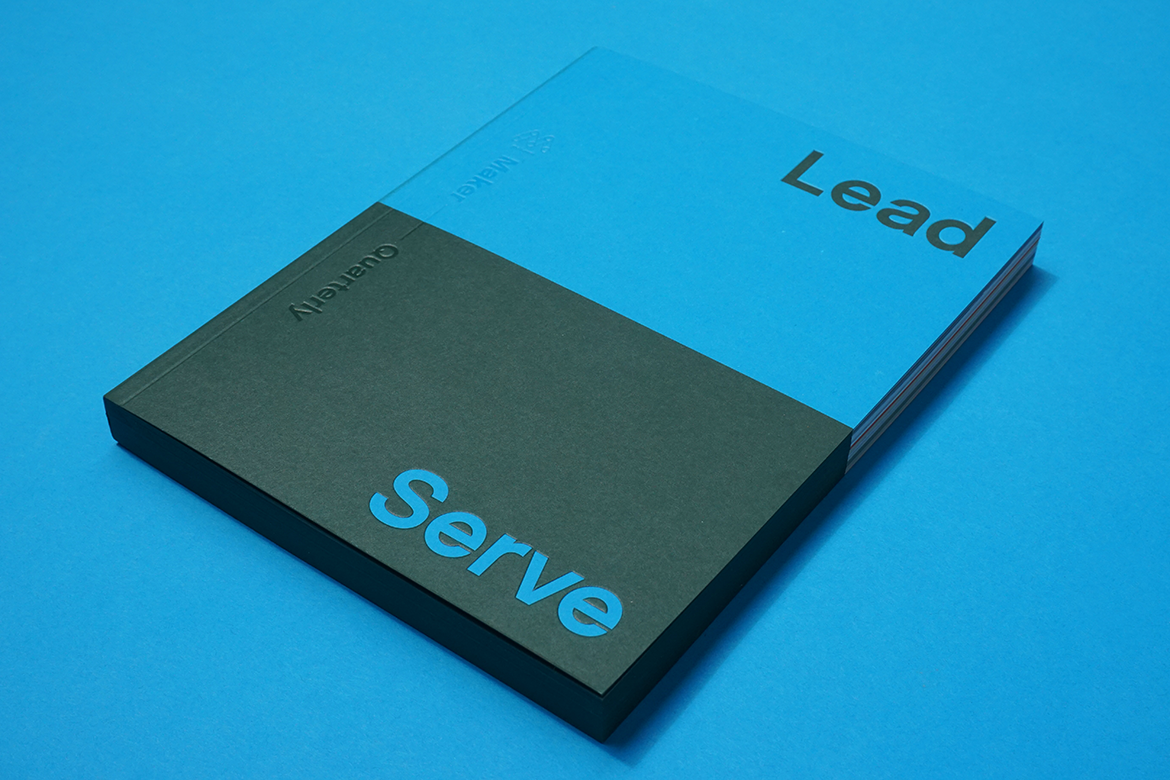


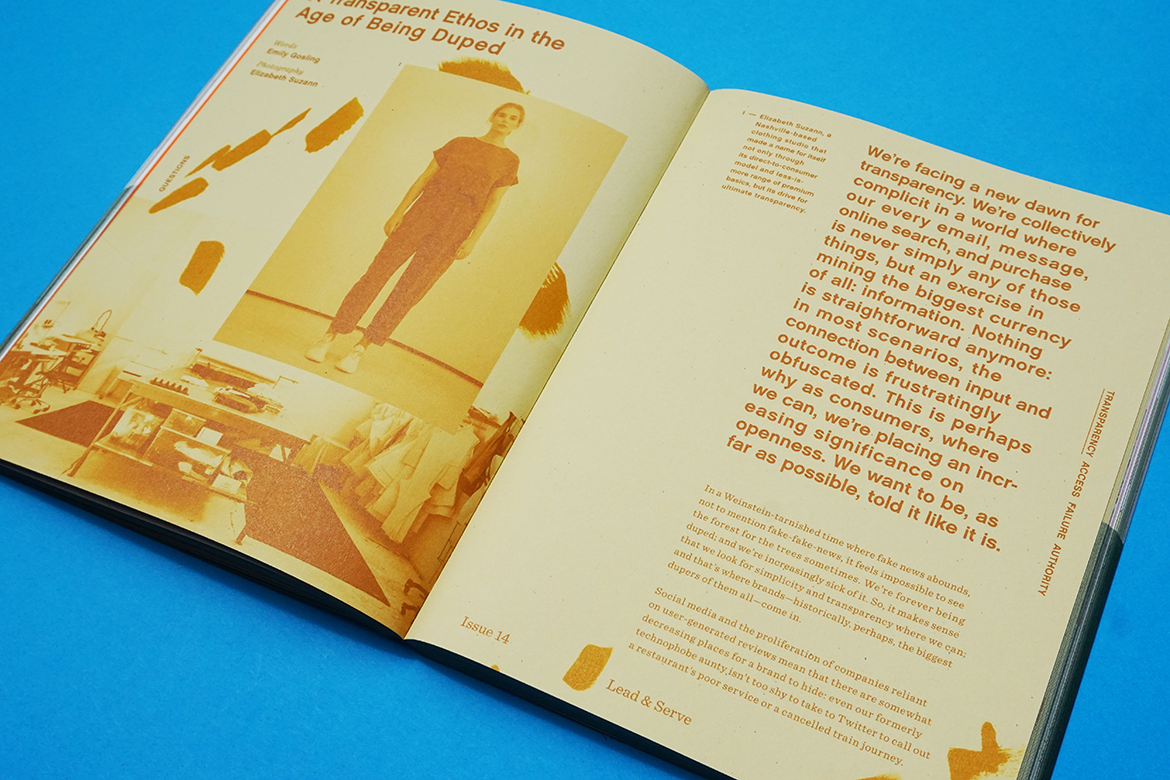
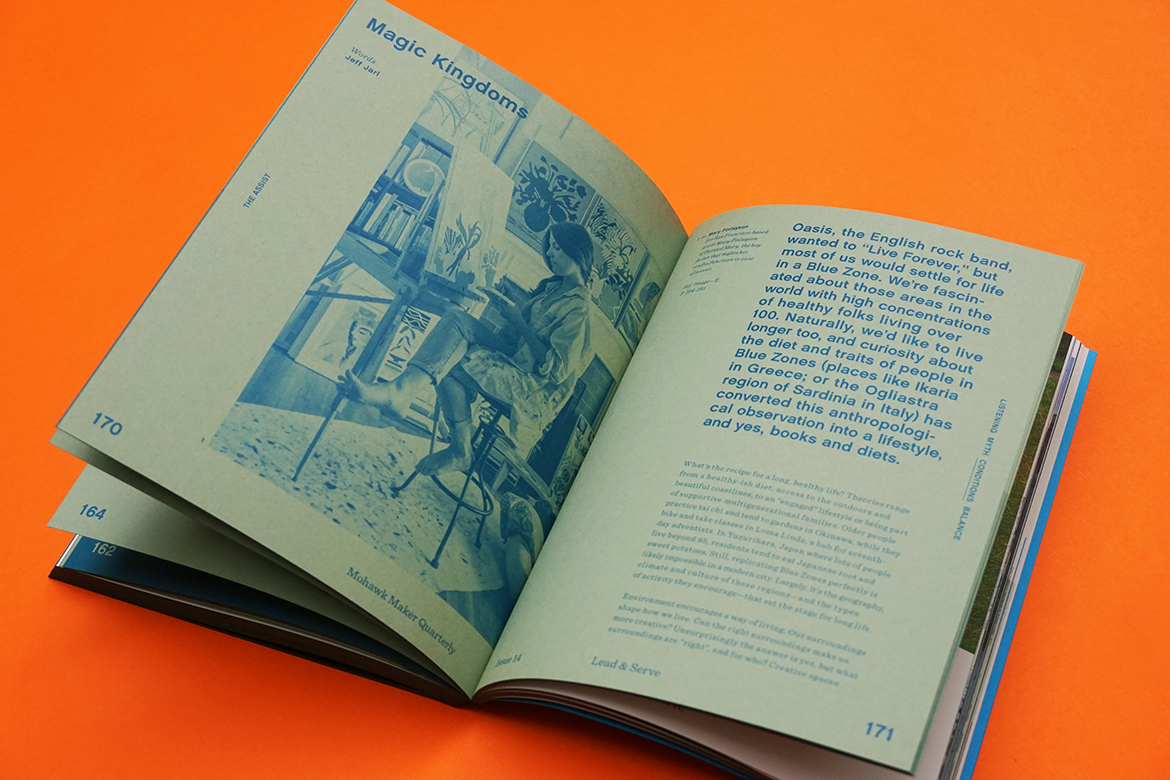

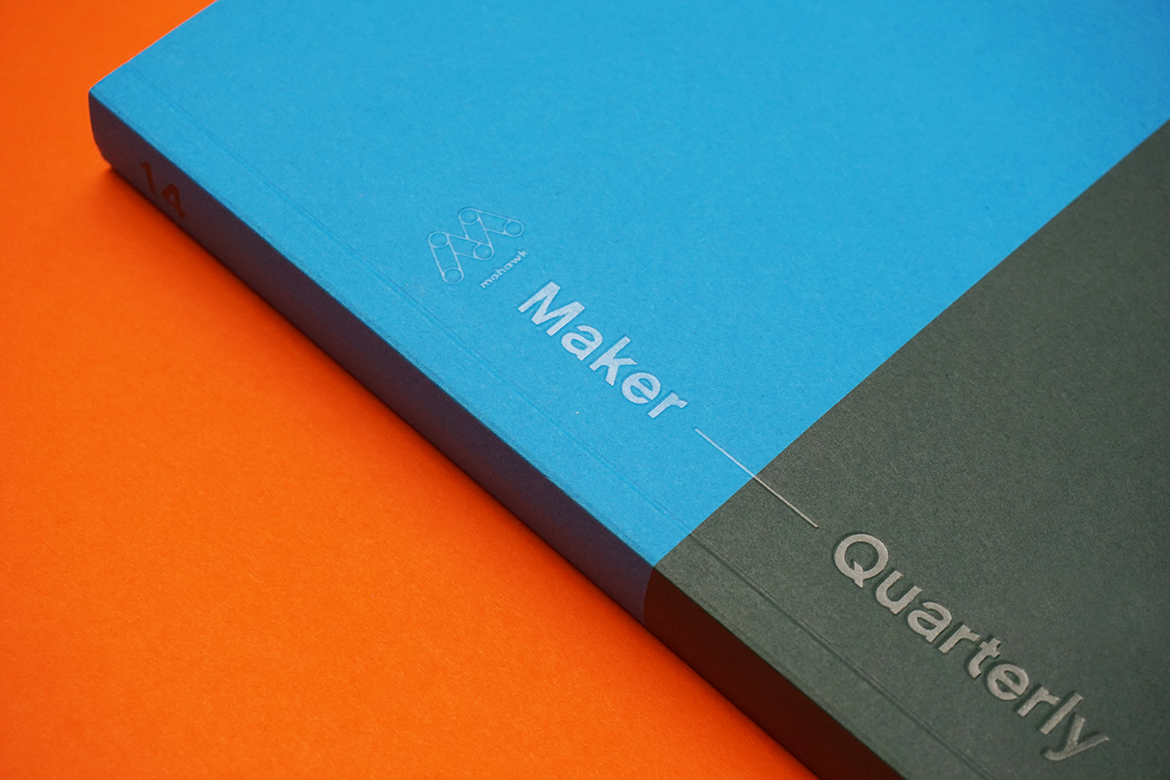
Production Notes
Edge Painting
The painted edge of a book. Historically, bookbinders would gild the edges of books with gold to show their importance. Today edge painting is typically done with opaque inks (sometimes metallic inks), resulting in a colorful edge surface. Foil Edging is done with metallic foil (such as gold or silver), resulting is a smooth, reflective surface.
Also known as Edging.
Materials Used
Suggested Articles
Luxury packaging is more than just a mere container - it’s a powerful brand statement that resonates long before your product is revealed.
As digital printing evolves from compromise to sophisticated tool—advances in color, texture, and fiber papers push the boundaries of what's possible.
In today's competitive marketplace, packaging plays a crucial role in brand perception and consumer satisfaction.





















